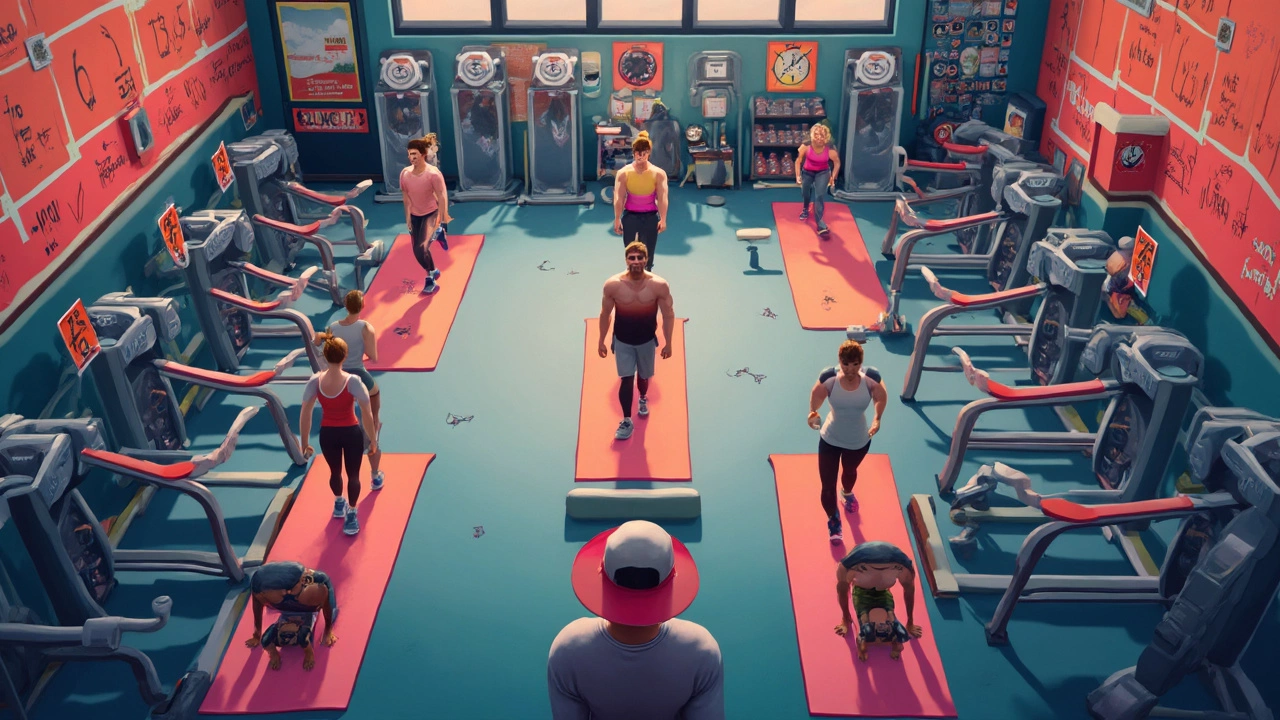Is 45 Minutes at the Gym Enough? Science-Based Fitness Guide for Busy Lives

Raise your hand if you’ve let time (or, let’s be honest, Netflix) talk you out of going to the gym. You’ve probably wondered: is a sub-hour session even worth it? The fitness industry is full of all-or-nothing messages—you’ve seen them: “No pain, no gain,” or “Go hard or go home.” The truth is, most real people don’t have two hours to kill on a Tuesday, especially if you work, have a family, or a cat who demands dinner at exactly 6:01 PM (looking at you, Oliver). So let’s get straight to the tough question: is 45 minutes at the gym enough to see results, feel stronger, and not feel like you’re wasting your time? The answer might surprise you.
What Science Says About 45-Minute Gym Workouts
First, let’s squash a myth: you don’t need to spend hours at the gym to get fit. Researchers at McMaster University in Canada found that just one set of resistance exercises performed slowly (taking 6 seconds per rep) delivered similar strength gains as three sets performed quickly. That’s wild, right? In terms of cardio, a 2023 meta-analysis in the British Journal of Sports Medicine dug through dozens of studies and found that moderate-intensity aerobic workouts lasting 30-45 minutes, performed 3-5 times a week, slashed the risk of heart disease and improved body composition about as effectively as much longer sessions.
Time doesn’t equal quality, and sometimes, shorter workouts may even produce better results because you’re less likely to burn out or get stuck scrolling through Instagram between sets. Pop quiz: how much of your “one hour” at the gym is actually spent working out, versus chatting, filling your water bottle, or just zoning out? If you keep your intensity up, 45 minutes can fit a lot of work. Think supersets (doing two exercises back-to-back), circuits, HIIT, or EMOM (every minute on the minute) formats. These keep your rest short and your heart rate up. A study by the American Council on Exercise reported that circuit training at a moderate pace burned up to 30% more calories than traditional strength training in the same time frame.
You might wonder, "What about building muscle?" Muscle protein synthesis—the process that drives muscle growth—peaks after 20 to 30 minutes of training, assuming you're challenging yourself. As for weight loss, calorie balance is king, not workout length. Doing 45 high-intensity minutes that leave you sweaty can torch as many calories as a sluggish 90 minutes. Just check out this table derived from Harvard Health’s calorie-burning stats for a 155-pound person:
| Exercise (Moderate Intensity) | 45 Minutes |
|---|---|
| Treadmill Running (6 mph) | 495 calories |
| Elliptical Trainer | 378 calories |
| Stationary Bike | 405 calories |
| Weightlifting | 189 calories |
So, yes, you can do a lot in less than an hour. But there are limits: competitive bodybuilders, ultra-marathoners, or elite athletes need more time because their goals and programs are next-level. For the rest of us? Consistency and effort outweigh marathon sessions.

Designing a Powerful 45-Minute Workout Routine
Don’t just walk into the gym with no plan, because 10 minutes will vanish into the black hole of indecision. The secret to milking every minute is structure. Break your session into short, focused chunks. For example, here’s how I structure most of my own workouts (and yes, I spill water everywhere—don’t judge):
- Warm Up (5 minutes): Jumping jacks, arm circles, bodyweight squats. Gets your heart rate up, preps joints.
- Main Strength/Circuit (30 minutes): Choose 4-6 compound moves like deadlifts, push-ups, kettlebell swings, pull-ups, or squats. Work in supersets or circuits, resting as little as you need.
- Cardio/Finishers (5-7 minutes): Intervals on the rowing machine, battle ropes, or treadmill sprints. High-intensity, short bursts to light up your metabolism.
- Cool Down/Stretch (3-5 minutes): Don’t skip it. Reduces soreness and risk of injury.
It’s important to choose a routine you’ll actually enjoy. If you hate burpees, swap them out. Even a brisk walk at a steep incline on the treadmill can fire up your legs and heart. The best workout is the one you do regularly, not the “ideal” program you dread. Keep in mind: tracking what you did—weight, reps, exercises—helps you see progress and motivates you to come back. I use my phone’s notes app, but an old-school notebook works just as well. For many people (me included), music boosts intensity—create a playlist that makes you want to move, not nap.
If you’re new to the gym or worried about wasting time, consider hiring a trainer for a session or two. Lots of people never learn how to adjust machines or set up barbells properly. One survey by PureGym found that 42 percent of beginners waste precious minutes just figuring out how to use equipment, or even waiting for machines. Getting help early can pay off for years.
What if you want to get extra efficient? Try these tips:
- Pick full-body moves: They give you the most bang for your buck.
- Keep your rest short—set a timer, so you don’t overdo breaks.
- Lay out all your equipment at the start, so you don’t wander the gym looking for dumbbells.
- Don’t waste time at the water fountain: bring a full bottle.
- If it's crowded, have plan B exercises (so you don’t stand around waiting).
And here’s a bonus: studies show that working out in shorter, focused sessions leads to better mental focus and less gym burnout. Our brains love variety and clear goals—45 minutes is usually just long enough to challenge yourself but not so long you start hating it.

How to Know If 45 Minutes Is Working For You
No one likes wasting their effort. The only way to know if your 45 minutes is enough is to track your results, not just your time. Here’s how to tell if you’re on the right track:
- Your strength is creeping up—lifting heavier dumbbells, grinding out more reps, or running faster.
- Your clothes start fitting a little differently (in the good way).
- You have more energy outside the gym (chasing after Oliver counts).
- Muscle soreness fades faster, and you recover without feeling totally wiped.
Data doesn’t lie. If your progress plateaus after a few months, it might be time to shake things up—add new exercises, bump the intensity, or change your workout split. And here’s a weird-but-true fact: studies from the Journal of Strength and Conditioning Research report that more rest can be just as important as more work. Exercising 45 minutes most days, with true recovery days, beats overtraining every time.
Don’t obsess over the clock. Some days you’re in and out in 32 minutes, others you soak up every second of your 45. Consistency is what matters. The people with the best results aren’t the ones who work out the longest—it’s the ones who show up, week after week, through holidays, Mondays, and even those days you slept in. If you miss a session or two, don’t beat yourself up. The gym isn’t going anywhere, and you haven’t lost your progress.
If you hit a stretch where you only have 20 minutes—hey, it happens—remember: something always beats nothing. Even a walk around the block on a busy day keeps the habit alive. And if self-motivation is rare, try group classes: they fit a ton into a 45-minute window and you just have to follow along.
So next time someone tells you longer is better in the gym, just smile, plug in your headphones, and knock out a focused, powerful 45. Your body (and your schedule) will thank you. If only meal prepping dinner for both myself and Oliver was this straightforward.
